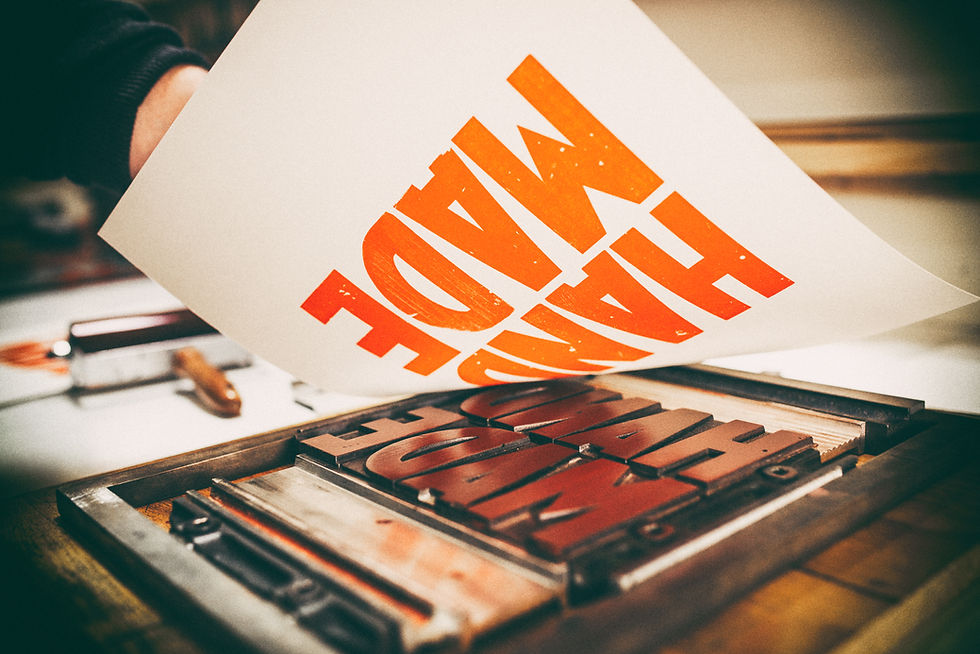Overview of Printmaking Techniques & Methods
- statiraart
- Aug 4
- 4 min read
Introduction to Printmaking

This complex artistic process transforms ideas into tangible works of art through various techniques, facilitating image reproduction and exploration of patterns, textures, and visual effects. This medium enables artists to explore creativity by reproducing images, patterns, and textures on paper or other surfaces. The main categories of printmaking include relief, intaglio, screenprinting and planography. Each printmaking method presents unique characteristics and challenges, making the journey of discovery both rewarding and enjoyable. Printmaking is an artistic exploration that fosters innovation and personal expression, inviting artists to push creative boundaries and engage with the process's physicality. Each print tells a unique story, reflecting the artist's vision and voice.
Relief Printmaking

Relief printmaking encompasses various techniques, including woodcut, linocut, and letterpress. In woodcut, the artist carves into a wooden block, while in linocut, a softer linoleum surface is used, allowing for more intricate designs. The choice of material affects the depth of the carving and the detail that can be achieved. Additionally, the use of different inks and printing presses can influence the final appearance of the print, with options ranging from oil-based to water-soluble inks. The process typically involves multiple steps, including inking the block, registration for alignment, and careful pressure application during printing to ensure a clear transfer of the image onto the paper.
This technique is celebrated for its directness and the tactile nature of the materials, allowing for a hands-on approach that connects the artist intimately with their work. The versatility of relief printing enables artists to produce everything from intricate designs to vibrant, large-scale prints.
Intaglio Printmaking

Intaglio printmaking is an intricate technique that involves incising an image onto a metal plate, typically copper, zinc or plastic. The lines are filled with ink, and the surface is wiped clean before the plate is pressed onto paper, resulting in rich, detailed images. This method is known for its ability to produce fine lines and subtle tonal variations.
Common intaglio techniques include etching, engraving, and aquatint, each offering unique textural qualities and effects. The process requires a press capable of applying significant pressure to transfer the ink from the plate to the paper, often involving a heavy, specialized printing press designed for this purpose.
Silkscreen Printmaking

Silkscreen printmaking, also known as screen printing, is a vibrant and versatile technique that allows artists to create bold, colorful images. By using a mesh screen to transfer ink onto a substrate, artists can achieve a wide range of effects, from sharp lines to soft gradients. This method is particularly popular in contemporary art and commercial applications, thanks to its adaptability and potential for layering colors.
Typically, a stencil is applied to the mesh screen, which blocks certain areas from receiving ink, thereby creating the desired image. The use of various types of inks, such as water-based or plastisol inks, can further enhance the durability and finish of the prints, making them suitable for different surfaces and applications.
Planography

Planographic printmaking is a process characterized by the use of a flat surface for image creation, where both the printing and non-printing areas remain at the same level. This technique encompasses various methods, including monotype, monoprint, lithography, and photographic printmaking techniques. In lithography, for instance, the principle that oil and water do not mix is utilized; artists apply a greasy medium to a flat stone or metal plate, enabling ink to adhere solely to the drawn areas. Monoprints involve the creation of unique or limited-edition prints through direct application of ink to a surface, while photographic printmaking incorporates light-sensitive materials to produce images. Monotypes, on the other hand, are characterized by their one-of-a-kind nature, as they are created by applying ink to a plate and then transferring it onto paper, resulting in a unique print with no identical copies. This process often allows for greater spontaneity and experimentation with color and texture, as artists can manipulate the ink directly on the plate before printing.
Digital Printmaking

Digital printmaking is a modern evolution that combines technology and traditional printmaking techniques. This process allows for the creation of images using digital tools, which are then printed onto various substrates using high-quality printers. One of the key advantages of digital printmaking is its capacity for precise reproductions, which significantly differs from traditional printmaking editions. Unlike traditional methods that may introduce variations in each print due to manual processes, digital printmaking ensures that each reproduction is identical, maintaining consistency in color, detail, and overall quality.
Additionally, digital printmaking offers remarkable flexibility, enabling experimentation with color, composition, and texture in ways that were previously unimaginable. The use of advanced software allows for intricate adjustments and enhancements, resulting in highly detailed images. This method also supports a wide range of printing techniques, including giclée printing, which utilizes inkjet technology to produce high-quality prints with vibrant colors and sharp details. Making creating copies, exact and inexpensive.
Conclusion
In conclusion, printmaking is a vibrant and diverse field that offers endless opportunities for artistic expression. Each technique brings its own unique flavor and challenges, inspiring artists to explore their creativity and push the limits of their imagination. Whether you are drawn to the tactile nature of relief printing, the precision of intaglio, or the bold colors of silkscreen, there is a printmaking method that can resonate with your artistic vision. Embrace the journey of discovery in printmaking, and let your creativity flourish!







Comments